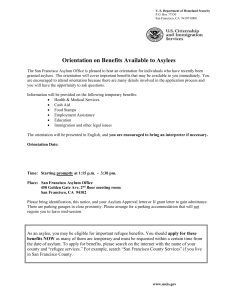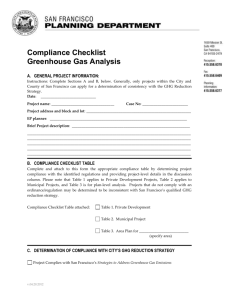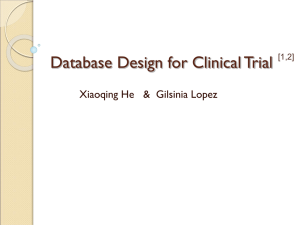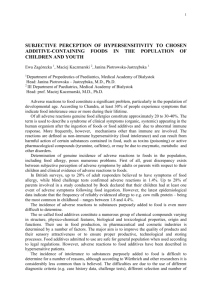San Francisco Medicine - San Francisco Medical Society
advertisement
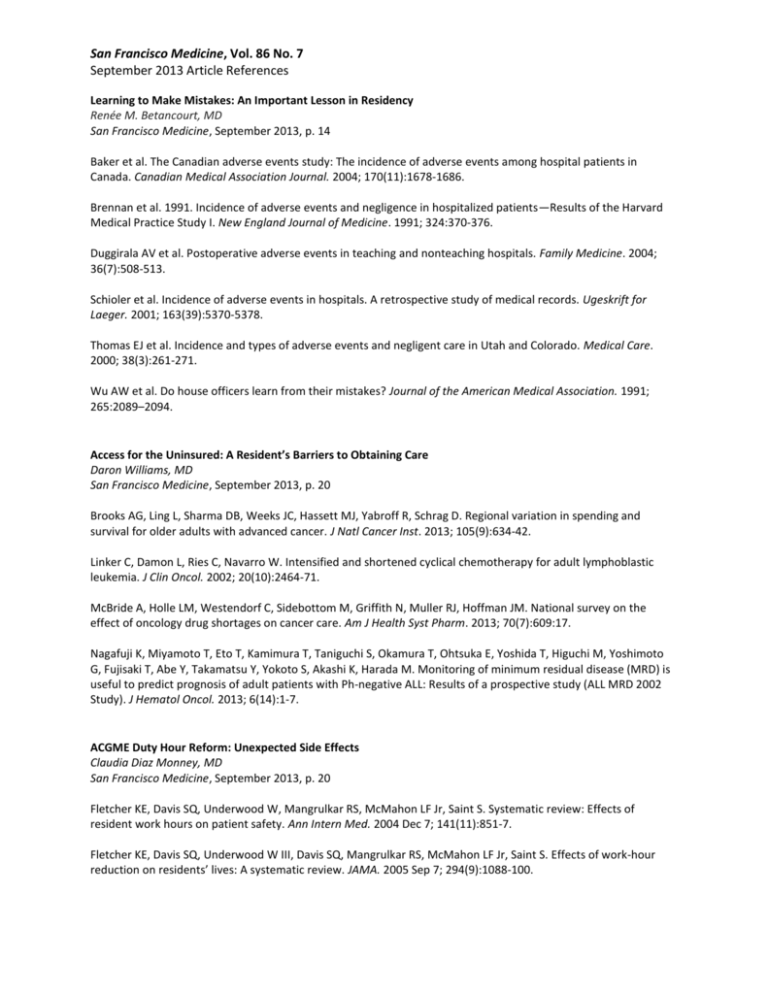
San Francisco Medicine, Vol. 86 No. 7 September 2013 Article References Learning to Make Mistakes: An Important Lesson in Residency Renée M. Betancourt, MD San Francisco Medicine, September 2013, p. 14 Baker et al. The Canadian adverse events study: The incidence of adverse events among hospital patients in Canada. Canadian Medical Association Journal. 2004; 170(11):1678-1686. Brennan et al. 1991. Incidence of adverse events and negligence in hospitalized patients—Results of the Harvard Medical Practice Study I. New England Journal of Medicine. 1991; 324:370-376. Duggirala AV et al. Postoperative adverse events in teaching and nonteaching hospitals. Family Medicine. 2004; 36(7):508-513. Schioler et al. Incidence of adverse events in hospitals. A retrospective study of medical records. Ugeskrift for Laeger. 2001; 163(39):5370-5378. Thomas EJ et al. Incidence and types of adverse events and negligent care in Utah and Colorado. Medical Care. 2000; 38(3):261-271. Wu AW et al. Do house officers learn from their mistakes? Journal of the American Medical Association. 1991; 265:2089–2094. Access for the Uninsured: A Resident’s Barriers to Obtaining Care Daron Williams, MD San Francisco Medicine, September 2013, p. 20 Brooks AG, Ling L, Sharma DB, Weeks JC, Hassett MJ, Yabroff R, Schrag D. Regional variation in spending and survival for older adults with advanced cancer. J Natl Cancer Inst. 2013; 105(9):634-42. Linker C, Damon L, Ries C, Navarro W. Intensified and shortened cyclical chemotherapy for adult lymphoblastic leukemia. J Clin Oncol. 2002; 20(10):2464-71. McBride A, Holle LM, Westendorf C, Sidebottom M, Griffith N, Muller RJ, Hoffman JM. National survey on the effect of oncology drug shortages on cancer care. Am J Health Syst Pharm. 2013; 70(7):609:17. Nagafuji K, Miyamoto T, Eto T, Kamimura T, Taniguchi S, Okamura T, Ohtsuka E, Yoshida T, Higuchi M, Yoshimoto G, Fujisaki T, Abe Y, Takamatsu Y, Yokoto S, Akashi K, Harada M. Monitoring of minimum residual disease (MRD) is useful to predict prognosis of adult patients with Ph-negative ALL: Results of a prospective study (ALL MRD 2002 Study). J Hematol Oncol. 2013; 6(14):1-7. ACGME Duty Hour Reform: Unexpected Side Effects Claudia Diaz Monney, MD San Francisco Medicine, September 2013, p. 20 Fletcher KE, Davis SQ, Underwood W, Mangrulkar RS, McMahon LF Jr, Saint S. Systematic review: Effects of resident work hours on patient safety. Ann Intern Med. 2004 Dec 7; 141(11):851-7. Fletcher KE, Davis SQ, Underwood W III, Davis SQ, Mangrulkar RS, McMahon LF Jr, Saint S. Effects of work-hour reduction on residents’ lives: A systematic review. JAMA. 2005 Sep 7; 294(9):1088-100. San Francisco Medicine, Vol. 86 No. 7 September 2013 Article References Manjunath A, Srirangam SJ. Shorter shifts and more frequent handover. BMJ. 2010; 341:c4858. Petersen LA, Brennan TA, O’Neil AC, Cook EF, Lee TH. Does housestaff discontinuity of care increase the risk for preventable adverse events? Ann Intern Med. 1994; 121:866-872. Van Eaton EG, Tarpley JL, Solorzano CC et al. Resident education in 2011: Three key challenges on the road ahead. Surgery. 2011; 149:465-473. Joint Commission on Accreditation of Healthcare Organizations. Sentinel Event. Statistics. 2003. Horwitz LI, Krumholz HM, Green ML, Huot SJ. Transfers of patient care between house staff on internal medicine wards: A national survey. Arch Intern Med. 2006; 166:1173-1177. Landrigan CP, Parry GJ, Bones CB et al. Temporal trends in rates of patient harm resulting from medical care. N Engl J Med. 2010; 363:2124-2134. Reed DA, Levine RB, Miller RG et al. Effect of residency duty-hour limits: Views of key clinical faculty. Arch Intern Med. 2007; 167:1487–1492. Auger KA et al. Better rested, but more stressed? Evidence of the effects of resident work hour restrictions. Acad Pediatr. 2012 Jul-Aug; 12(4):335-43. doi: 10.1016/j.acap.2012.02.006.


